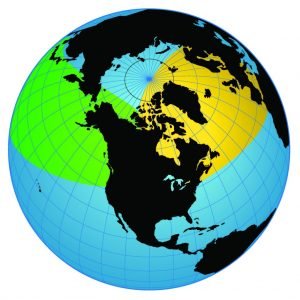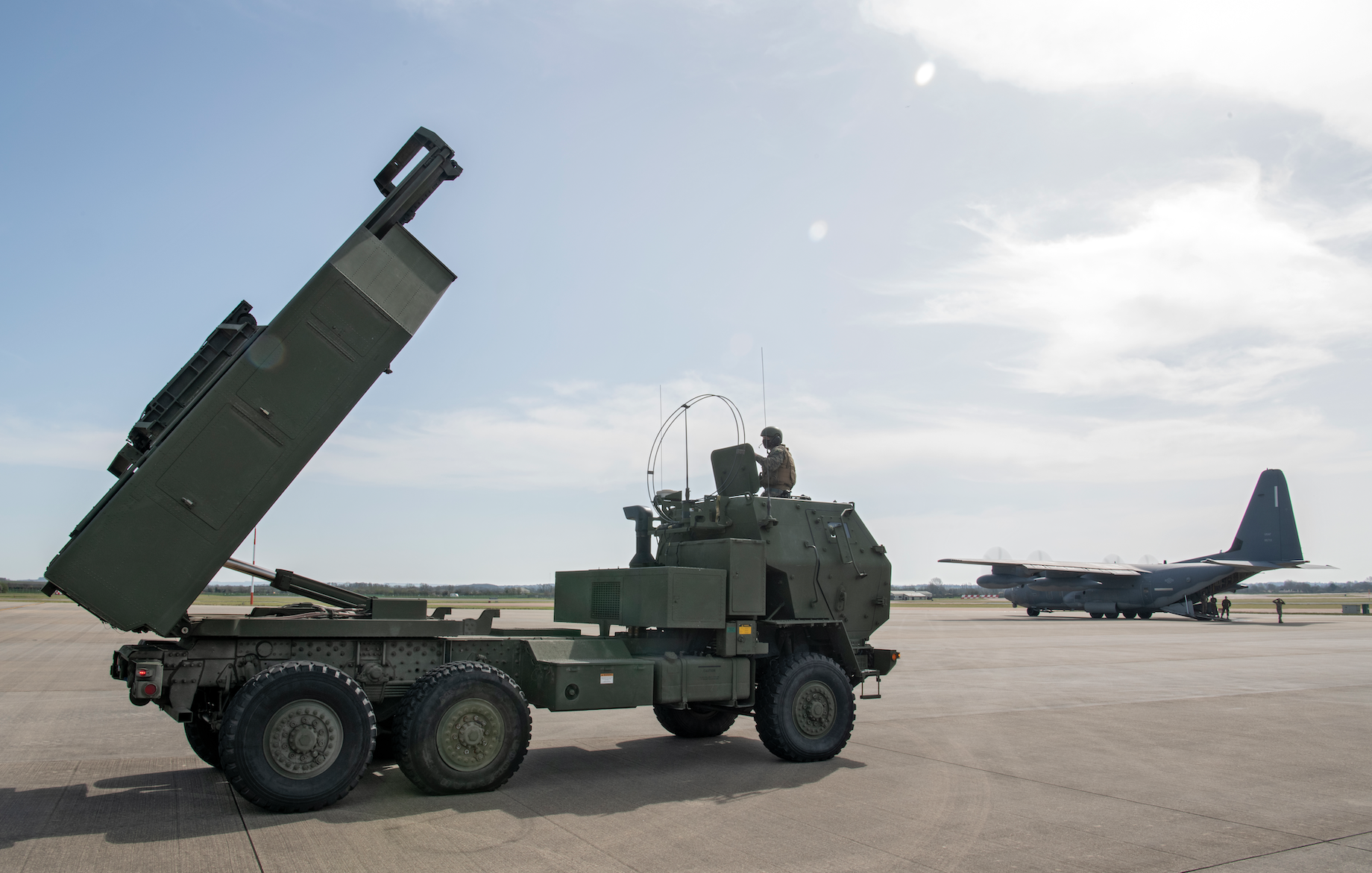By Robbin Laird
The Navy and the Marines are reworking ways to enhance their warfighting and deterrence capabilities in the North Atlantic. This effort has been referred to as preparing for the “Fourth Battle of the Atlantic” by Adm. James Foggo III, when he was commander of U.S. Naval Forces Europe/Africa.
As CNO Admiral Richardson established 2nd Fleet, he highlighted a new role of the High North as a key area of interest in dealing with the Russian challenge, one which for the direct interest of the United States is focused around what Admiral Gortney highlighted as the 10:00 O’clock threat to CONUS.
In an interview we did with the then head of Northcom and NORAD, Admiral Gortney, this is how he put the challenge:
“With the emergence of the new Russia, they are developing a qualitatively better military than the quantitative military that they had in the Soviet Union. They have a doctrine to support that wholly government doctrine. And you’re seeing that doctrine in military capability being employed in the Ukraine and in Syria.
“For example, the Russians are evolving their long-range aviation and at sea capabilities. They are fielding and employing precision-guided cruise missiles from the air, from ships and from submarines. Their new cruise missiles can be launched from Bears and Blackjacks and they went from development to testing by use in Syria.
“It achieved initial operating capability based on a shot from a deployed force. The Kh-101 and 102 were in development, not testing, so they used combat shots as “tests,” which means that their capability for technological “surprise” is significant as well, as their force evolves. The air and sea-launched cruise missiles can carry conventional or nuclear warheads, and what this means is that a “tactical” weapon can have strategic effect with regard to North America.
“Today, they can launch from their air bases over Russia and reach into North American territory.
“The challenge is that, when launched, we are catching arrows, but we are not going after the archers.
“The archers do not have to leave Russia in order to range our homeland. And with the augmentation of the firepower of their submarine force, the question of the state of our anti-submarine warfare capabilities is clearly raised by in the North Atlantic and the Northern Pacific waters.
“We need to shape a more integrated air and maritime force that can operate to defend the maritime and air approaches to North America as well as North America itself. We can look at the evolving threat as a ten o’clock and a two o’clock fight, because they originate from the ten and two. And the ten o’clock fight is primarily right now an aviation fight.”

But how does meeting this challenge look from the standpoint of North Carolina based Marines?
And with the enhanced focus on integration with naval forces, how will the Marines reshape their forces and approach to operate in the 10:00 O’clock area of operations?
During my visit to Camp Lejeune in April 2021, I had a chance to discuss the challenge of shaping an effective way ahead with three members of the II MEF team who have taken the longer-term perspective on meeting these challenges.
My meeting with Dr. Nick Woods, the Center for Naval Analyses II MEF Field Representative, with Dan Kelly, a retired Marine Colonel who works within the G-5, and Major Ronald Bess who works Plans as well at the command.
The three together provided a very helpful perspective in understanding how enhancing integration with the Navy looks like from a II MEF lens.
There are a number of takeaways from that conversation which I would like to highlight.
And as I have written with regard to earlier articles, I am not holding these individuals responsible for what I concluded from our conversation, but thank them for their insights.
There are four key takeaways.
The first is that this a work in the early phases of navigating the way ahead.
As one participant highlighted that it is extremely important that both the Navy and Marine Corps both work through what each side brings to the key warfighting functions in the North Atlantic.
Each side needs to better understand what each force can bring to the key warfighting functions, both in terms of contributions and limitations.
And with the clear focus of Second Fleet working with the only operational NATO command on U.S. territory, how best to work with Allied Joint Forces Command?
For example, if there is a shift from engaging the Marines built around the large deck amphibious ship, what then is the role of frigates or destroyers in supporting Marine Corps operations?
The second is to understand what warfighting gaps exists as such integration unfolds, and how best to fill those gaps?
And this needs to be realistic.
What capabilities do we have now?
What would we like to have?
And what is a realistic acquisition strategy to fill those gaps? As one participant put it: “The joint force as well as those of our allies and partners all are going through change and we need to crosswalk this so we identify Marine Corps contributions and do we have any gaps.”
The third is the impact of potential disconnect between what the Combatant Commands want from Marine Corps forces and potential new paths for future Marine Corps development.
The demand side clearly needs to change to provide for room for transformations that might well attenuate Marine Corps capability in the near to middle term but provide for prospects for new capabilities down the road.
The fourth is the general challenge of reworking how the fourth battle of the Atlantic would be fought.
How will the joint and maritime forces work together most effectively with allies to deliver the desired combat and crisis management effects?
This ties back to the first point, namely, ensuring that the Navy and the Marine Corps work through most effectively how to deliver with regard to the key warfighting functions in a correlated and where possible integrated manner?
As one participant put it: “We need to go to the White Board and work through each of the key functions to ensure that we can deliver an integrated capability before we let go of any current capabilities which we have.”
And as another participant concluded: “there is a strong argument to be made for divesting of legacy capabilities now in favor of future capabilities that would provide a greater contribution to European defense in the future.”
For an example of a change being worked, see the following:
In an article by Capt. Kelton Cochran, 24th MEU published on May 24, 2021, the deployment of HIMARS with the 24th MEU was highlighted.
The 24th Marine Expeditionary Unit’s 2021 deployment cycle brings with it a capability not yet employed by an East Coast MEU. In addition to the more traditional assets allocated to the MEU as it composited ground, logistics, and aviation combat elements in September 2020, the crisis response force was also assigned a High Mobility Artillery Rocket System detachment.
The 24th MEU is exploring a different approach towards employing HIMARS as a theater-level expeditionary asset—keeping the asset forward in the task force’s area of operations as opposed to embarked on naval vessels.
“MEUs operate globally, year around as the Nation’s Force-in-Readiness,” said U.S. Marine Corps Col. Eric D. Cloutier, commanding officer, 24th MEU. “As we lean into the future fight, expanding our reach and flexibility by utilizing platforms like HIMARS gives us the ability to facilitate maneuver and freedom-of-movement for friendly forces, and our Allies and partners, while denying our adversaries the ability to do the same.”
HIMARS is designed as an affordable and adaptable theater force protection asset. The system has been in service with the Department of Defense since 2005 and was fielded by the U.S. Marine Corps in 2008 in support of operations Enduring Freedom and Iraqi Freedom.
As the Corps looks to the future and refocuses on its naval roots, commanders are exploring the numerous options for employing the vehicle-mounted precision rocket system in more dynamic operations in the maritime and littoral environment. Embarking HIMARS platoons aboard Amphibious Ready Group ships and deploying them via surface connectors, such as landing craft utility vessels, is a concept of employment that West Coast MEUs have rehearsed, and developed to a high level of proficiency.
Maintaining a forward deployed land-based element of HIMARS that is attached to the MEU allows it to capitalize on strategic lift capabilities provided by USMC and Joint platforms in support of ARG / MEU missions. A HIMARS platoon, with strategic lift, can quickly infiltrate contested environments, prosecute targets, and depart before adversaries are able to detect or engage them. This technique is known as HIMARS Rapid Infiltration. The 24th MEU conducted HIRAIN in both live-fire and rehearsal events since early 2021 during pre-deployment training. Since deploying, the 24th MEU has engaged in multiple opportunities for sustainment through rehearsals with Joint units in theater, like the 352d Special Operations Wing, based in the United Kingdom.
The Iwo Jima ARG consists of the amphibious assault ship USS Iwo Jima (LHD 7), transport dock ship USS San Antonio (LPD 17), and dock landing ship USS Carter Hall (LSD 50). Embarked detachments for the Iwo Jima ARG include Amphibious Squadron Four, Fleet Surgical Team Six, Helicopter Sea Combat Squadron 26, Tactical Air Control Squadron 21, Naval Beach Group Two, Beach Master Unit Two, Assault Craft Unit Two and Four, and Sailors from Amphibious Construction Battalion Two.
The 24th MEU consists of a ground combat element, Battalion Landing Team 1/8, a logistics combat element, Combat Logistics Battalion 24, and an aviation combat element, Medium Tilt-Rotor Squadron 162 Reinforced. The unit is a self-sustained amphibious fighting force comprised of a command element, ground combat element, aviation combat element, and logistics combat element. Embarked with the Iwo Jima Amphibious Ready Group, this Marine air-ground task force is forward deployed in the U.S. Sixth Fleet area of operations in support of U.S. national security interests in Europe and Africa.
Iwo Jima ARG-MEU team is manned, trained and equipped to fulfill amphibious requirements in support of maritime security and stability. Amphibious ready groups and larger amphibious task forces provide military commanders a wide range of flexible capabilities including maritime security operations, expeditionary power projection, strike operations, forward naval presence, crisis response, sea control, deterrence, counter-terrorism, information operations, security cooperation and counter proliferation, and humanitarian assistance and disaster relief.
U.S. Sixth Fleet, headquartered in Naples, Italy, conducts the full spectrum of joint and naval operations, often in concert with allied and interagency partners, in order to advance U.S. national interests and security and stability in Europe and Africa.
The featured photo: Marines from the 24th Marine Expeditionary Unit conduct firing training on a High Mobility Artillery Rocket System (HIMARS) at RAF Fairford on March 30, 2021. Special operation’s capabilities enhance the execution of HIMARS Rapid Aerial Insertion missions, extend the reach of long-range, precision strike capabilities and enable the joint force. (U.S. Air Force photo by Master Sgt. Roidan Carlson)


